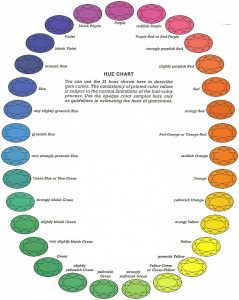The pure spectral sensations of violet, blue, green, yellow, orange, red and various combinations of these. Hue also refers to the sensation of purple (between red and violet), which is not found in the sun’s spectrum. There are only 31 hues are used in coloured stone grading.
